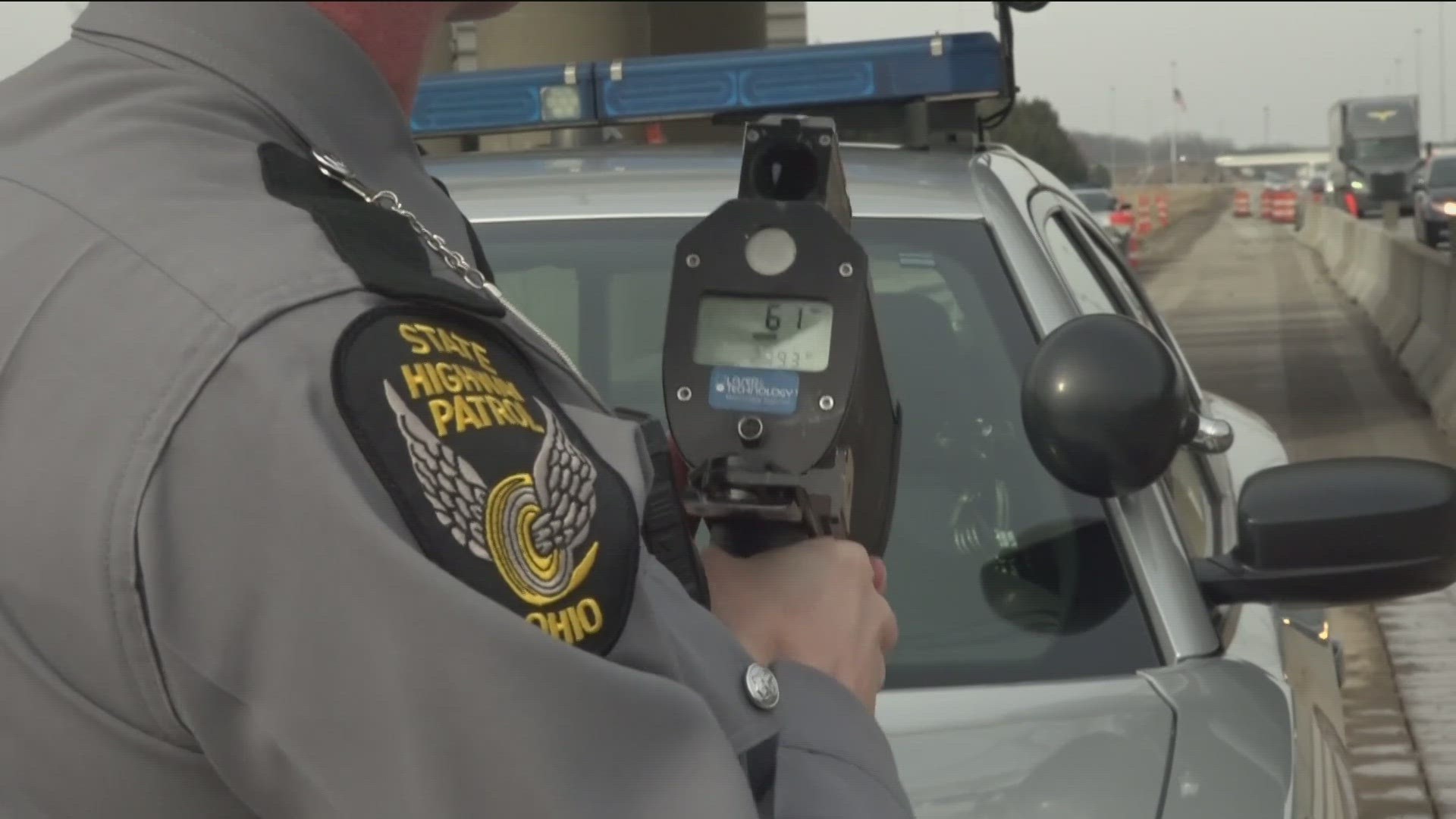WYANDOT COUNTY, Ohio — At first glance, the photo posted by the Ohio State Highway Patrol on Friday may look like an ordinary traffic stop in Wyandot County. But it's the details that make it surprising.
OSHP cited the driver in a 65 mph zone on U.S. Route 23 for going over double the speed limit. A trooper clocked the vehicle at 132 mph, OSHP said.
To get a feel of what it's like to drive at those speeds, WTOL 11 spoke to a racecar driver and a racing enthusiast who both have said speeding has become something more normalized for them at this point.
However, the biggest difference for them is that they are on a controlled racetrack or driving on other countries' highway systems where going a high speed is allowed and not on U.S. Route 23.
Taylor Fern is a law student at Wayne State University, but she said that her main passion has been racecar driving ever since she was a kid. She currently sprint-races for the United States Auto Club and has made her way around all tracks.
"To me, going 60 mph versus 135 mph, I don't realize the difference until we slow down," Fern said.
Fern said she and other drivers can reach speeds of up to 160 miles per hour and that it's just part of the game. For Fern and the other racers, it's something that's become a natural ability that they have adapted to.
For Glen Mazzone, it's pedal to the metal, too. Mazzone helps organize area racing events under Grand Vitesse Racing and the Toledo Grand Prix fundraiser.
Mazzone said he has driven almost the whole length of the German Autobahn. Along the way, there are times when the Autobahn highway system has no speed limit.
"For the most part, when you're driving that fast, you only do it for a short period of time, because it's still a public highway and you focus at the task at hand," Mazzone said.
While thrilling, his need for speed is still somewhat safe, Mazzone said, since the Autobahn system has no tolerance for distracted driving, passing in the right lane or slowing down in front of someone.
Mazzone said he likes the speed but there's also a time and place for it. In his opinion, drivers in the U.S. would not be able to handle the higher speeds as safely.
"It doesn't feel as fast if you would be driving illegally here, because quite frankly, you're not looking at the edge of the road for law enforcement," Mazzone said.
Fern would drive fast any day, but as a law student, she also knows the consequences that come with speeding and putting others' lives at risk.
"You're kind of being more dependent and reliant on the people around you who may not be as confident of drivers, or you're prone to nature running out in the road, right?" Fern said. "You just don't know."
OSHP said that in 2023 alone, troopers have already issued over 104,000 citations for excessive speed. With the recent start of the 100 deadliest days, that number will likely pick up.
The 100 deadliest days are the period of time between Memorial Day and Labor Day. These 100 days account for more than one-third of all fatal traffic crashes.
Staying safe starts with following the law, unlike the driver in Wyandot County who now faces the consequences of speeding.
“Each court is different on the cost associated with a citation, but more importantly, it is not worth the cost of someone’s life or someone being injured in a speed-related crash," OSHP Sgt. Ryan Purpura said. "Traffic laws are in place for the safety of all on our roadways, we ask motorists to do their part so everyone can make it safely to their destination."

